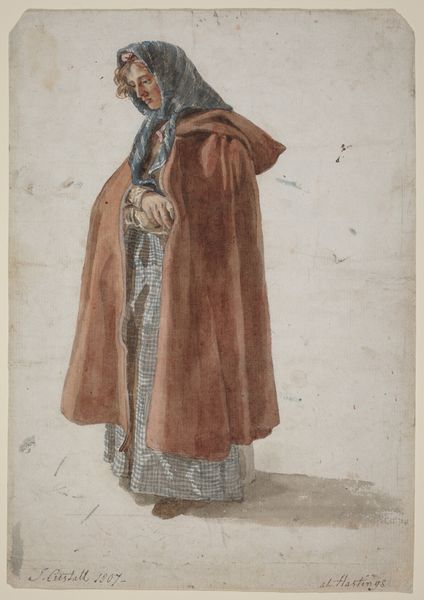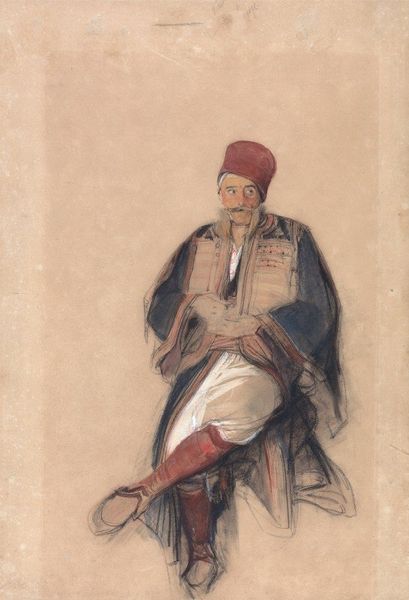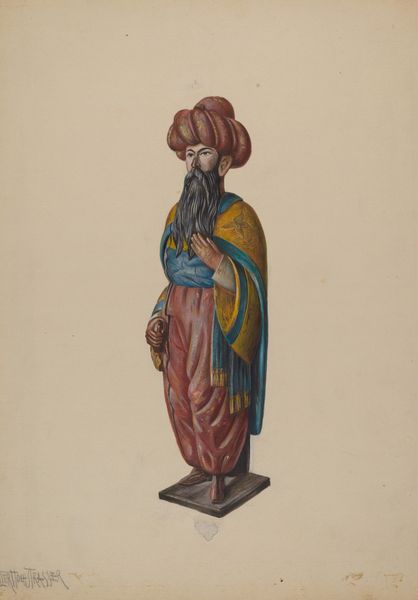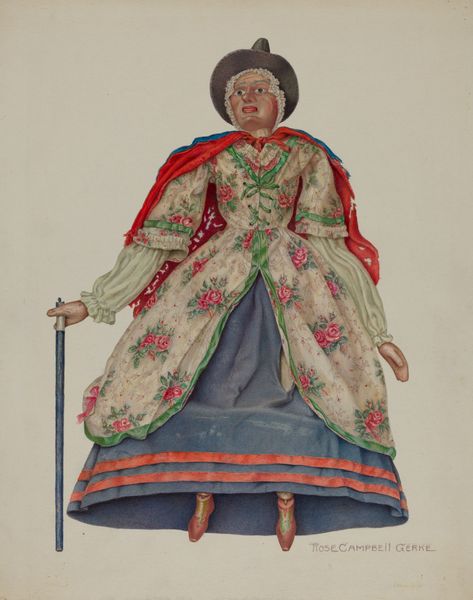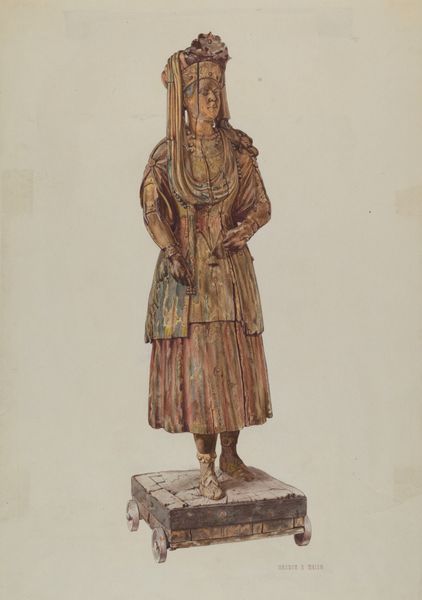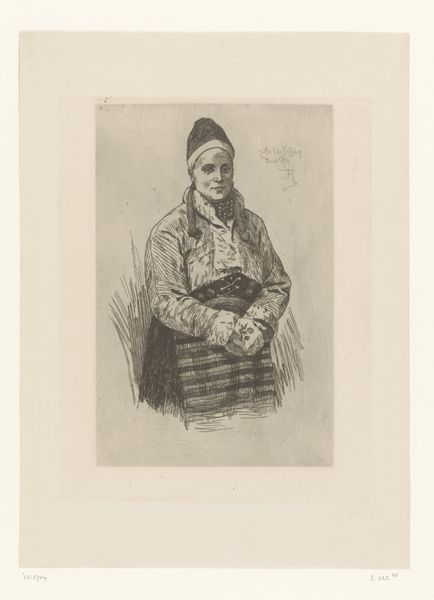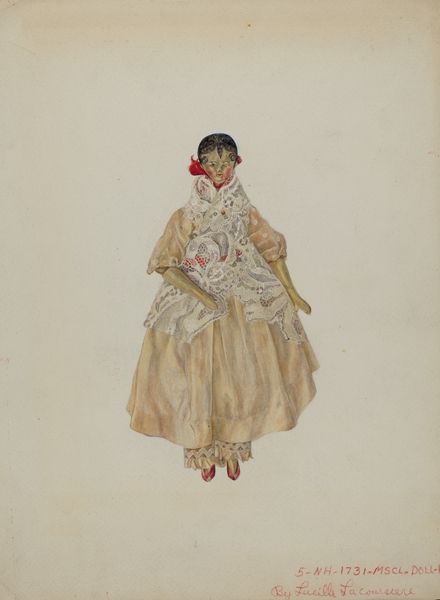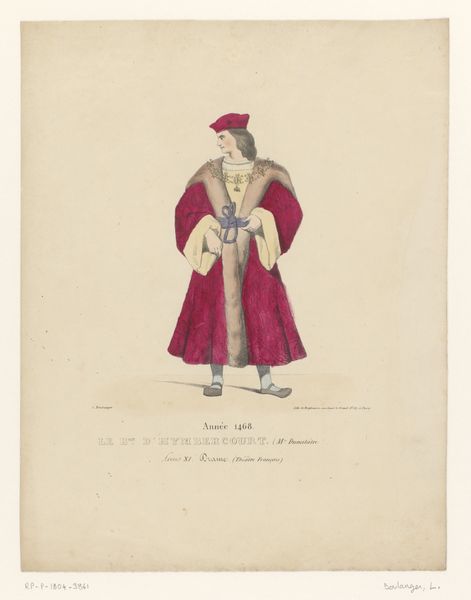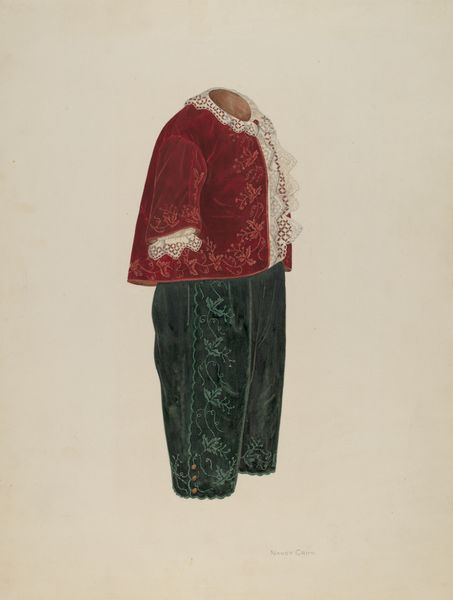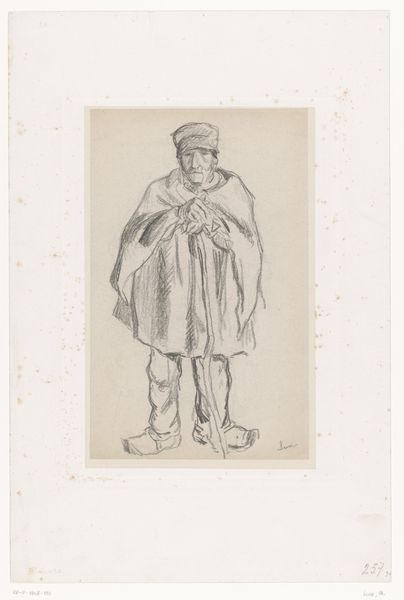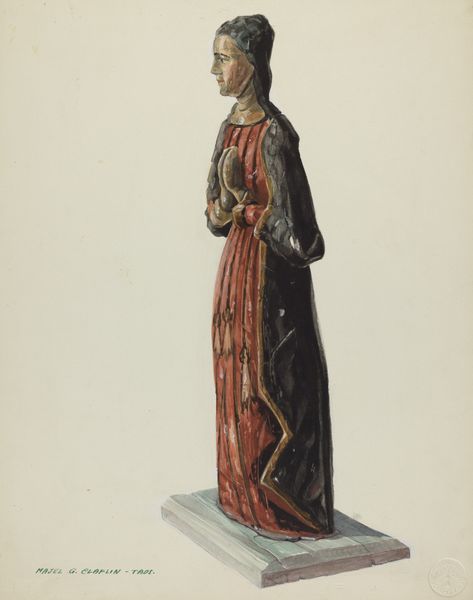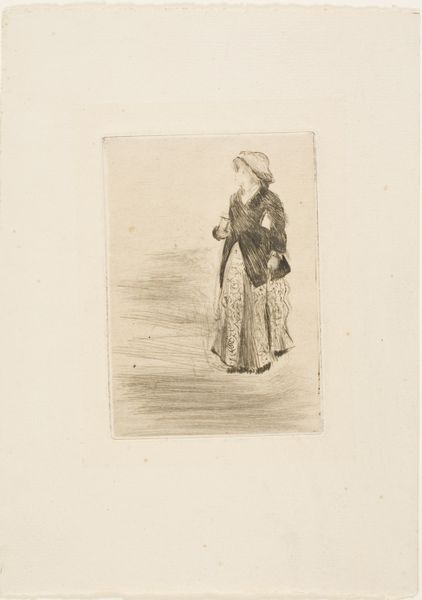
drawing, coloured-pencil, watercolor
#
portrait
#
drawing
#
coloured-pencil
#
charcoal drawing
#
figuration
#
watercolor
#
coloured pencil
#
genre-painting
#
watercolor
Dimensions: overall: 34.7 x 24.6 cm (13 11/16 x 9 11/16 in.) Original IAD Object: 4 3/4" wide; 7 3/4" high
Copyright: National Gallery of Art: CC0 1.0
Curator: We are looking at Jacob Gielens's drawing "Nut Head Doll," likely made around 1938, using watercolor and coloured pencils. What strikes you about it at first glance? Editor: Immediately, it’s the texture. The piece seems delicate, with almost a fragility implied by the medium, but then juxtaposed by the doll's formal posture and elaborate costume, there is also a slightly eerie presence. Curator: Yes, the contrast is significant. Let’s examine how Gielens manipulates form and color. Notice the detailed rendering of the doll's attire; the waistcoat and coat, alongside the upholstered chair, are clearly delineating space. Editor: I find myself wondering about the labor and craft behind this kind of doll-making. Those details would take quite a lot of hand work. What were the social conditions in which dolls like this were valued or created? The textures seem almost tactile, calling to mind needlework, embroidery and possibly, repurposing of materials. Curator: Interesting observation. There is indeed a material narrative at play here. But if we shift our attention back to composition, the artist guides us towards a concentrated focal point - namely, the figure’s rather peculiar “nut head.” This emphasis isolates it. The artist juxtaposes hard geometric forms and elaborate soft textural patterns to give tension in the doll. Editor: Right, but if this piece stems from the late 30s, wouldn't material constraints have influenced Gielens? The use of the drawing itself as a record perhaps reflects a shift towards resourcefulness, echoing that tension. Perhaps it questions societal extravagance while hinting at accessible artistry using readily available materials and documentation techniques? Curator: Perhaps! Yet what fascinates me is how Gielens manages to give the static doll a personality through subtle modelling and use of formal artistic conventions; it is far more complex than the rudimentary subject matter may seem. The piece serves a visual investigation and pushes towards emotional understanding of figuration beyond realism. Editor: And to me it showcases an early emphasis on reuse, the material as message; the doll speaks volumes about skill, but moreover points to ingenuity amidst restriction in times of need and austerity. Both readings create an open dialogue that makes this work extremely potent. Curator: Indeed, a compelling work to revisit with fresh eyes! Editor: Yes, it transforms how we observe the confluence of material history and art today.
Comments
No comments
Be the first to comment and join the conversation on the ultimate creative platform.
